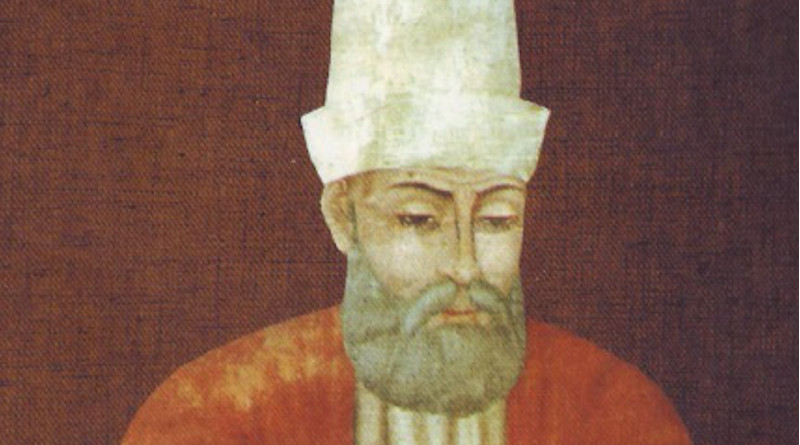Unveiling The Bektashi Sufi Order – Analysis
From its genesis, Islam developed into two antagonistic poles, that of jurists concerned with the Law that distinguishes the licit from the illicit (Hallal and Haram) and that of mystics who polish their hearts by invoking God to reflect light. A permanent tension between the sword and the rosary i.e. fiqh (Muslim law, a speciality of the ulama, scholars) and tassawuf (Muslim mysticism, Sufism, practised by the foqara, the “poor in God”). Sufism is the heart of Islam and it is its spiritual dimension and the very quintessence of the Muslim soul.
Sufism is recognized by the four Sunni legal schools (madahibs), and their four founders are recognized as Sufis in the true sense of the word. All in all, the term Sufi refers to an individual who has reached full spiritual realization, but an aspirant to such inner realization should be called a mutasawwif (مُتَصَوّف).
Sufism (in Arabic: تصوّف, taṣṣawuf) is the esoteric, mystical vision of Islam. It is a path of spiritual elevation through an initiation known as tassawuf or tariqa, which by extension designates the brotherhoods gathering the faithful around a holy figure.
Sufism finds its foundations in the Qur’anic revelation and in the example of the Prophet Muhammad , and it can therefore be said that it has been present, since the origins of the prophetic revelation of Islam, in the Sunni and then Shiite branches, although it took different forms in both cases.
Origin Of The Bektashi Sufi Order
The Bektashi order that was formed in Anatolia between the 13th and 15th centuries is the heir to the brotherhood of Ahmed Yesevï, founded in the 12th century in Turkestan, which combined the ancient spiritual and social customs of the Turkish people with the obligations of Islam. Prior to that, many different philosophies and tendencies had nurtured Bektashism towards its present form.
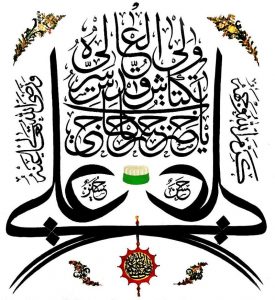
When Islam established itself in Central Asia as early as the 9th and 10th centuries AD with the hiring of Turkish mercenaries by the Arabs, shamanism had no choice for its survival but to merge with Sufism, this form of Islam tolerand and open to other spiritual tendencies. So shamanism had to dress up as Islam and thus “Sufism” to find its place in this changing world and its new dominant religion.
Because of their Central Asian origin, the Turks, in the course of their history and given the circumstances, adopted various religions (Buddhism, Nestorianism, Zoroastrianism, Manicheism, etc.) before becoming Muslims.
The original traditions of these peoples, which go back to the most ancient beliefs of shamanic and animist origin, have nevertheless remained anchored in the heart of their faith and appear in several places in rituals, forms of veneration or narratives.
The Semah of the Bektashis contains a direct reference to shamanism from Siberia and Central Asia in that part of the world where this dance imitates the flight of the crane, a totem animal allied to the “magical flight” performed by the shamans to meet the spirits and merge with them. This allusion marks the importance given to the themes of nature and animals to access the domains of the spirits, to converse with them on an equal footing. In shamanism (1), we find the idea of reincarnation and the idea of a circular time like the movement of the stars as expressed in the Semah (2).
The shaman inherits his function and is initiated into rituals that aim to get in touch with the spirits, notably by means of the drum and the clues given by nature and animals. For example, it is possible to distinguish a road leading to the spirits in the antlers of a deer. Other details are, also, given in epico-mystical texts written by dervishes between the 15th and 16th centuries (3). On the basis of the analysis of these texts, Ocak devoted a study to the form of pre-Islamic beliefs introduced into Bektashism (4).
Bektashism is, no doubt, a syncretism (5). Indeed, very clear connections can be found with forms of animist religion, whether in the worship of mountains, hills, rocks, trees (also found in pre-Hellenic cults,) but also with shamanism when it comes to “the practice of magic, the healing of diseases, the prediction of the future, the appearance of the dervish in the form of God, the power to command the forces of nature, the mastery of fire, the power to resurrect beings from their bones, the use of ceremonies common to men and women, and fighting with a wooden sword.” (6)
In the course of their history, the bektashis have incorporated Persian or Far Eastern elements such as metempsychosis, incarnation, dragon-fighting, fire worship, etc (7). Ocak has also detected in these texts numerous allusions to Judeo-Christian traditions such as the celestial ascent before death, the resurrection of the dead, the opening of the oceans to walk on water, and fertilization by a spirit.
The Bektashis – like the other supporters of the ancient Turkish or Kurdish religions such as the Yezidis, the Druze, the Alawis or the Ahl el-Haq – have developed a clever mix of earlier beliefs and Islam.
The diversity of this heritage shows a particular disposition to permeability and helps to explain, at least in part, the ease with which thinkers of the Bektashi faith were able to take advantage of the philosophical and secular ideas that were to develop in 19th and 20th century Turkey.
Mystical Path
Bektashism is an esoteric religious order derived from Sufism, a spiritual and mystical path of Sunni Islam. Like other Muslims, Bektashis believe in Allah and worship the Prophet Muhammad. However, they differ from the Sunnis by also worshipping Imam Ali, the son-in-law and cousin of the Prophet of Islam who is considered “the king of saints and spiritual guide” – like the Shiites. The Bektashi community marks its difference in the special interest it gives to its saints, as in Christianity.
This current of Islam was created by Haci Bektas Veli in the 13th century in Turkey and participated in the Islamization of Eastern Europe. But with the fall of the Ottoman Empire in 1922, Albania became the only country in Europe with a Muslim majority.
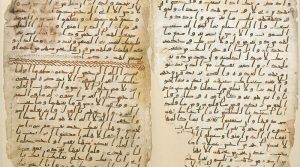
The Bektashi brotherhoods, at first mostly rural and nomadic, claim the heritage of Haci Bektaș Velī (1248 – 1341). The little historical evidence we have describes Haci Bektaș as a Sufi belonging to the Turkish tribes who came to Anatolia around 1230 A.D., presumably with some khārezmians, supporters of the Persian-Turkish dynasty of khwārezmšhāḥīān, who fled the Mongol invasions and found refuge in the lands ruled by the Seljuks (8).
Haci Bektaș was not a theologian like his contemporary Celāleddîn Rūmī, he was a mystic who, although Muslim, did not abandon the practices and customs of Central Asia. His hagiography which can be found in the Vilâyetnâme (Menâkib-i Hâci Bektaş Velî) or « Hagiography of the Saints » is surrounded by legends and unrealistic stories but the documents retracing the life of Haci Bektaș give him a certain credibility.
However, as is often the case with religions born of ancient syncretisms, the best documentation is to be found in the field, among the populations themselves (9).
Practised mainly in Albania, where 20% of the Muslim community is a follower, Bektashism has been promoted as a branch of Islam open to other religions and the West.
Today, the world centre of Bekachism is located in Albania. This is also where the majority of its practitioners live, although they represent only 20% of the country’s Muslim population.
Although mosques are often closed to the non-Muslim public, tekkes – their bektashi-equivalent – are accessible to everyone, as are the major festivals.
UNESCO Under The Bektashi Spell
Even Unesco is under the spell of the Bektashi belief. On its website, the UN agency says that “the words of the 13th-century philosopher Haci Bektas Veli constitute a message which eight centuries later coincides with the Declaration of Human Rights adopted by the United Nations in 1948” – nothing but that.
It is true that in the 13th century, Haci Bektas Veli already proclaimed that “there is no distinction of sex in debates. Everything that God created is there. There is no distinction between man and woman. The gap is in your opinions“.
Difficult to find in the three great monotheistic religions, equality between men and women is a reality among the bektashis, which can be seen, for example, in the mixing of sexes in their rites.
In the West, the image of women crystallizes fears about Islam – as witnessed in France since 1989 by the controversies and laws on the veil. Veiled women are sometimes seen as victims of religious and patriarchal subjugation, and sometimes as a growing threat to be eliminated as soon as possible. With its lack of veil and its mixed gender, Bektashism is appealing to both the Western religious and Western secular.
At the end of the communist era, Albania intended to join Europe and therefore sought to seduce and reassure the Western countries. In November 2005, a European Union delegation visited the country. When Didier Boulaud, who represented the delegation, submitted his report to the French Senate in April 2006, he spoke of Bektashism in particularly laudatory terms: “Albania today presents a true model of religious tolerance. By way of illustration, marriages between Muslims, Catholics, Orthodox or Bektashis are commonplace. Albanian Islam appears to be far removed from fundamentalist practices. …] The accentuation of the singularization, among Muslims, of the bektashis compared to the Sunnis – so much so that it is now considered that there are four religions and not three in Albania – has further reinforced the particularities of Albanian Islam.“
While Bektashism is a minority current, it is set up as a model of Islam and makes Albanian society, unlike its neighbours in the former Yugoslavia, susceptible to the influence of Salafist and Wahhabi currents.
The situation has not changed much, while Bosnia and Kosovo have been marked in recent years by strong recruitment by Daech, Albania seems to be less tempted by religious extremism.
On this particular point, Nathalie Clayer, historian and specialist of Albania argues : “The war in Bosnia in the 1990s generated a radicalization that did not take place in Albania.”
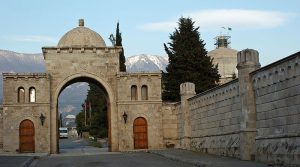
In Albania, there is even a travel agency offering a tour focused on bektashism. “We offer you to discover this religion, a mix between moderate Islam and tolerant Christianity. You will be accompanied by professionals of the religion (dervish, baba, …) and practitioners,” says the website. It is even possible to take part in a festive meal.
For Nathalie Clayer, this “merchandising” of Bektashism is “dangerous” : “By developing the image of a cool Islam, it also implies that the Islam we know is not cool, that it is not good – which accentuates the clichés that Europeans have about Sunni Islam. To say that a religion or current is tolerant is meaningless in itself : tolerance comes from its followers and interpretations, not from the religion itself. “
The Bektashi Sufi Order Flirts With Catholicism
The world leader of the Bektashis of Albania, Baba Edmond Brahimaj, was received by Pope Francis at the Vatican on Wednesday, May 11, 2016, Vatican Radio reported. For the Bektashis, Mother Teresa represents a “concrete example“. A first meeting between Bektashi leadership and the Vatican leadership took place during Pope Francis’ visit to Albania in September 2014.
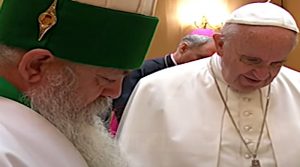
“It was a wonderful meeting, ” said Baba Edmond Brahimaj. “The pope, leaving aside protocol, addressed a brother as a brother to a brother, with great cordiality. It was a message of fraternity. We reaffirmed the value of dialogue, of fraternity and of the importance that religious communities have for today’s society. »
“We support and follow the Holy Father, Pope Francis,” said Baba Edmond Brahimaj, “a guide who carries the flag of peace, of peaceful coexistence among religions, peoples and nations. We strongly support this path and the path taken in the name of God and of fraternity among peoples. And we are all equally proud to have Mother Teresa as a concrete example of how we can embody and live God’s love in concrete acts for our neighbor. I take this opportunity to wish peace and good to all ! ”
According to Baba Edmond Brahimaj, during the meeting, the Pope spoke of his apostolic visit to Albania. The Pope “preserved in his heart and mind” several “images” : “the youth which is the strength of this people and of this country“, “the cemeteries, with many graves of those who sacrificed their lives, who had been persecuted and had offered their lives for faith in the Lord and for brotherhood.“
Pope Francis recalled the meeting he had had “with all the religious communities in Albania, where he saw a firm will to meet, to engage in fraternal, sincere, frank dialogue, to transmit to all believers the way of love, encounter and peace that the Lord had left us, because there is no alternative to the way of peace and encounter“.
Speaking of his community, its leader Baba Edmond Brahimaj stressed that it was “a current of Muslim mysticism that transmits peace, fraternity and faith in the Lord. It is a bridge between the West and the East“. The Bektashi community believes that “the only path that leads to God” is “that of peace and brotherhood“. The Bektashi “are also against all forms of violence and terrorism,” he emphasized
They defend the family, he said, “that between a man and a woman, as a reference point for today and tomorrow. Man and woman are equal, enjoy the same dignity and have the same value at the time of prayer in the temple. They are welcomed in the same way, without discrimination or distinction. It is a unity, according to God’s plan. » “The Bektashi do not cover women with burqas or other types of coverings,” continued Baba Edmond Brahimaj, “because, according to them, man is the image of God and the dignity of man should not be covered, but should be manifested.“
The Ritual Sufi Dance Semah
On November 16, 2010, UNESCO inscribed Semah on the list of the Intangible World Heritage of Humanity. This ritual dance represents the movement of a bird, particularly a crane, and the movement of the planets around the sun. It can be seen today in the confined halls of Sufi brotherhoods or on feast days when the uninitiated public is invited.
The Semah is also the symbol of the Bektashi brotherhood, which played a key role in the Islamization of the Ottoman Empire, Anatolia and the Balkans. The history of the Bektashis refers first and foremost to Haci Bektaș Velî, a thirteenth-century Alevi Turkish philosopher and mystic who is said to have professed a mysticism based on the concept of the unity of God, the involvement of the individual in the natural cycle and the wahdat al-wujūd (10), the theory of the oneness of the being dear to Ibn ‘Arabi (11), Sohrawardi or Mollā Sadrā.
Part of the Shia branch of Islam, Bektashi Sufism expressed in the Semah, also, the cosmic ascension of the Prophet Muhammad, Ali his son-in-law and the twelve imams or the martyrdom of Hussein at Kerbala, known as mi’raj.
The mystical ascension proposed by this dance is generally accompanied by music and songs. In some Sufi brotherhoods such as the Mevleviyye, the order of the Whirling Dervishes, prevalence is given to the ney or lute whose name in Persian and Turkish means “reed”. It is this same flute that Mevlānā Celāleddîn Rūmī features in the first 18 verses of Masnavī, whose Persian poet and mystic Jāmī said of its author that he was not a prophet but had a book.
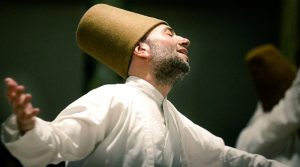
In the Bektashi brotherhoods, it is the drum that gives rhythm to the mystical dance. This instrument called kobouz is not unrelated to the one used by the shamans to invite the spirits to dialogue and is part of their shamanic initiation. This shamanic heritage is inherent in the development of Turkish Sufism.
The particularity of the Semah of the Bektashis or Alevis lies in the fact that it is a dance done in a group or couple, where men and women are equally involved. The place of the Bektashi women is far from the traditional brotherhood mode since they take part in the assemblies and several are authors of mystical poetry.
Existence Of Different Sufi Orders
The study of the development of the different Sufi currents in Turkey or in the Ottoman Empire in general would require too long an analysis for our purpose. We will content ourselves with taking up the classification that T. Zarcone makes in order to situate the place of Bektashism within these brotherhoods. T. Zarcone separates the Sufi brotherhoods into two distinct groups, the so-called heterodox mystical orders and the orthodox. Between the two tendencies, he classifies what he calls the “Turkishized Arab orders”, namely the Rufâ’iyye, the Kâdiriyye and the Halvetiyye. On the orthodox side, we find the Nakşibendiyye (which has spread rather widely in China and India) and the Şaziliyye (which only appeared in Turkey very late).
Among the heterodox traditions are Melāmetiyye and Melāmī, but especially Mevlevī and the Bektashis. Very close at the beginning of their history, in particular through the common influence of the so-called Kalandar orders, named after the wandering ascetics who claimed to be so, they distanced themselves at the death of their inspirer, the great Rūmī. His son, Sultan Valad, structured the order, and it was after him that the Mevleviyye, the order of the Whirling Dervishes, really constituted itself into tekke (convents) with šuyūḫ (Sheiks or masters of faith) at their head. It is, also, thanks to him that the order acquired significant power at the Ottoman court and spread throughout the Empire beyond the Balkans, in the Arab provinces and the Maghreb.
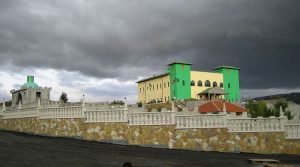
It is customary to consider the order mevlevī as aristocratic and urban, as opposed to Bektashism, which was long confined to villages or nomadic tribes. Over the centuries, the bektashis have always adopted a more humble profile, not hesitating to mingle with other philosophical or social groups by keeping their membership and their initial rites more or less secret. Far from operating a syncretism beyond what could make their particularities disappear, they have managed to keep some essential features of their ancient shamanic religion. The association of the Bektashi dervishes and the army corps of Sultan Murâd (1362-1389) known as the Janissaries (12) is a perfect example of the adaptability of this order.
Aspects Of The Bektashi Way
The basis of the mystical doctrine of the Bektashis rests on the content (not the form) of the noble Qur’an and the words attributed to the Prophet Muhammad.
The bektashis believe in one God, Allah, and they pray only to God, the creator of the worlds, recognizing all his divine attributes. In addition to the five Muslim religious prayers, the Bektashis are accustomed to perform two specific prayers, one at dawn and one at dusk for the welfare of all humanity.
Bektashi followers worship the Prophet Muhammad, who is the last messenger of God and the seal of prophecy. They, also, show a special interest in Imam Alī, son-in-law and cousin of the Prophet of Islam considered as “the king of saints and the spiritual guide”.
The founder of the Bektashi Way is Hunkar Hadji Bektach Veli (1248 – 1341), whose real name was Muhammed Bektach. He took, during his life, the titles hunkar, hajji and veli. The word hunkar means “he who creates the miracle”, the word Hajji means “he who makes the pilgrimage to Mecca” and the word veli means “he who carries wisdom”.
The duty of the true bektashi believer is to love God and to respect all his creatures. He is invited to, also, respect all the prophets sent by God as well as all the holy books, as it is commanded in the Noble Qur’an Sura 2 verse 136 – : “We believe in God, in what has been revealed to us, in what was revealed to Abraham, Ishmael, Isaac, Jacob and the Tribes; in what was given to Moses and Jesus; in what was revealed to the prophets by their Lord, without making any difference between them. And it is to God that we are entirely subject to.“
The bektashi is invited to walk towards wisdom to increase his knowledge and understanding of the Universe. Moreover, God is in everything in the Universe, including in Man. Love of mankind is the essence of bektashism which believes in the manifestation of the Creator in Man.
The love of God is the ultimate goal of the bektashi wayfarer and this makes love the highest degree of faith. Love sits in the heart of Man and the heartbeat is the true pilgrimage around the divine house, the true Ka’ba.
Conclusion
The Bektashis managed to gain some autonomy from the 1920s onwards, drawing up statutes and regulations in order to be recognised as a fully-fledged religious community. But if we look more closely, we can see that not only the weight of the non-Sufis in Muslim circles has not led to the recognition of the Bektashis’ independence from Islamic institutions, but also that the Brotherhood itself has not really been able to transform itself into a institutionalized religious community. The main reason for this is that religious authority within the brotherhoods remains essentially defined at the local level and that the legitimacy of supra-local structures can only be very much in evidence. It is difficult, even if, as we have seen, fraternal networks always have a supra-local dimension. This dimension is, however, by its very nature very variable. It varies with time and the charisma of the spiritual masters, and does not fit well with a rigidification imposed by, for example, institutionalization or even a nationalization.
You can follow Professor Mohamed CHTATOU on Twitter : @Ayurinu
Endnotes:
- “From the Evenk language, adopted by the Russians, then entered the French language in 1699, the term “shaman” refers to a reality that worries, but also fascinates the missionary, the traveller or the scholar. A diviner, a therapist, an intermediary between the world of men and an invisible universe populated by spirits, the shaman of northern and central Asia adapts, in a syncretic way, to Christian, Buddhist and Muslim societies”. Stepanoff, Ch., Zarcone, T., p.11.
- Cf . Chtatou, M. 2020, « Reflections on the Anthropology of Religion » in : Eurasia Review :
- Among the most famous are the Menâkib-i Hâci Bektaş Velî and the Saltuk-nâme by Ebül Hayr-i Rûmî. Other more contemporary examples can also be seen in the poetry of Riza Tefvik.
- Cf. Ocak, A.Y., 1983.
- Cf. Melikoff, I., 1998, p. 9.
- Cf. Zarcone, T., 1993, p. 6.
- Cf. Melikoff, I., 1998, p. 2.
- Cf. Melikoff, I., 1998, p. 2.
- Cf. Melikoff, I., 1998, p. 25.
- Cf. http://www.oxfordislamicstudies.com/article/opr/t125/e2466
- Cf . Chtatou, M. 2020, « Ibn ‘Arabi and the Search for Humility and Purity » in Eurasia Review https://www.eurasiareview.com/06022020-ibn-arabi-and-the-search-for-humility-and-purity-analysis/
- Cf. Zarcone, T., 1993, p. 6.
Bibliography:
Abiva, H., Bektashism and Its Presence in Albanian,Lands, http://bektashiorder.com/bektashism-inalbania.
Ahmataj, S. 1999. Bektashizmi nën smogun e një libri, Botim, Urtësia.
Chtatou, M. 2020, « Reflections on the Anthropology of Religion » in : Eurasia Review of March 20, 2020:
——-. 2020, « Ibn ‘Arabi and the Search for Humility and Purity » in : Eurasia Review of Februery 6, 2020: https://www.eurasiareview.com/06022020-ibn-arabi-and-the-search-for-humility-and-purity-analysis/
Clayer, N. 2004. Le bektachisme en Albanie / Bektashizminë Shqipëri. Tirana : albPaper.
——- 2000. « La Kadiriye en Albanie », in : Journal of the History of Sufism 1-2 (2000), pp. 213-244
——- 1994. Mystiques, Etat et Société : Les Halvetis dans l’aire balkanique de la fin du XVe siècle à nos jours. Brill : Leiden.
——-1990. L’Albanie, pays des derviches. Berlin : Wiesbaden.
Doja, A. 2008. Bektashizmi në Shqipëri. Tirana : AIIS.
Duijzings, G. 2010. Religion and the Politics of Identity in Kosovo. New York : Columbia University Press.
Elsie, R. 2004. Historical Dictionary of Albania, European historical dictionaries. Metuchen, New Jersey : Scarecrow Press,
Jazexhi, O. 2007. The Bektashi Tarikah of Dervishes. http://www.reocities.com/djalosh/bektashi.pdf.
Mélikoff, Irène : Sur les traces du soufisme turc – recherches sur l’Islam populaire en Anatolie, Istanbul, Ed. Isis, 1992,
——-1998. Hadji Baktach. Un mythe et ses avatars. Genèse et évolution du soufisme en Turquie. Leiden : Brill.

